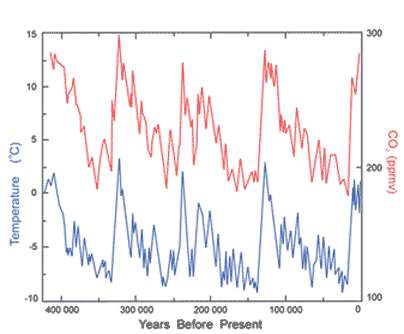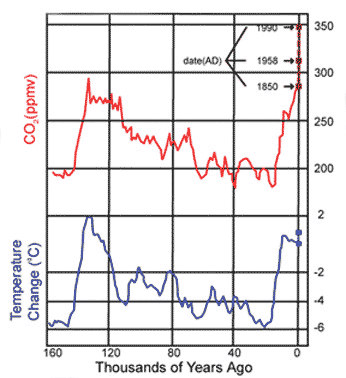I-SIS Special Miniseries - Life of Gaia
This miniseries is dedicated to our planet earth, so we may better appreciate how she lives and sustains all creatures large and small, that we may learn to dance to the complex rhythms of her life music without stopping her in her tracks.
Space scientist and inventor Jim Lovelock first proposed in the 1970s that the entire earth is a self-organizing, self-regulating entity, rather like an organism. He named the earth Gaia, after the Greek earth goddess.
The idea that Gaia is alive and has a life of her own immediately caught fire. It inspired many earth scientists to look for the dynamic processes that organize and regulate the currents of the earth, to make a congenial home for all her inhabitants. These scientists are richly rewarded.
Records from ice and deep sea cores show detailed globally correlated changes going back at least 800 000 years, leaving us in no doubt that the earth behaves from moment to moment as one coherent whole, just like an organism.
Not only can we can read Gaia’s life-history from her deep memory stores, we can also tune in to her life-force pulsing as she is living today.
Gaia spinning in her perpetual dance around the sun, her mighty breath tumbling from hot belly to the poles, swirling across the continents, bringing welcome rain to forests, grasslands and crops, or torrential downpours, floods and hurricanes. Vast slow vortices of water connect her oceans from the furthest northern reaches to the southernmost haunts, from the shimmering sea surfaces to the dark deep beds, distributing warmth and nutrients, sustaining life with life.
Gaia’s breath is our breath, her water our water. Let Gaia live that we may live.
‘Climate change’ conjures up a picture of a gradual process occurring in the timescale of the earth, hundreds if not thousands of years. Not anymore. Since the mid 1990s, scientists have been asking if climate change might be abrupt, in other words, it could happen suddenly, over a matter of decades or even years, and be global in extent. Dr. Mae-Wan Ho reports.
The picture most people and most policy-makers have of climate change is the one produced by the Intergovernmental Panel on Climate Change (IPCC), which gives smooth projections of global warming ranging from 1 to 6 C by the end of this century, depending on the computer models used. All the models assume processes occur smoothly and linearly, however, and do not predict abrupt change.
Real earth processes, however, are nonlinear, often involving positive feedback and threshold effects that give rise to abrupt, catastrophic jumps or swings between different states.
As more and more data on ancient climate accumulate, it has become clear that abrupt climate change is a reality on many different scales, and has occurred many times in the past.
One way to test a climate model that predicts the future is to see how well it post-dicts the past. For example, nine major ice ages have been found in the geological record, alternating with periods of abrupt global warming. Can the model predict those given reasonable starting conditions?
How to read the earth’s temperature
Geological records of temperatures can be read by various means. Over the recent past, scientists look at the growth history of trees that are hundreds and even thousands of years old. The rings give a record of yearly growth and are thicker during warmer years.
Over periods of tens to hundreds of thousands of years, records come from drilling ice from areas of permafrost. Ice is H2O, the great majority of oxygen is the isotope oxygen 16, or 16O, a small proportion is the isotope oxygen 18, 18O. Water containing 18O condenses from the air at a slightly higher temperature than that containing 16O, so snow falling from colder air contains less 18O, and the ratio of 18O: 16O provides an estimate of the temperature. Similar methods can be used with other isotope ratios, such as deuterium to hydrogen 2H:H. The ice also contains trapped air bubbles, which include gases of interest such as carbon dioxide and methane, and calcium levels indicate atmospheric dustiness.
The age of the ice can be determined by counting annual deposition layers back to about 40 000 years ago. Beyond that, other methods, such as radioactive decay dating are used. A core from "Dome C" in the Antarctica is expected to produce a record stretching back 800 000 years.
The earth has gone through cycles of rapid warming followed by freezing every 100 000 years or so, with sub-periodicities of 41 000 years, 23 000, 19 000, 10 000 years and shorter. And there is a remarkable correlation with the concentration of carbon dioxide in the atmosphere (Fig 1).

Figure 1. Correlated carbon dioxide andtemperature changes over the past 400 000 years.
This close correlation between temperature and carbon dioxide concentration is one of the reasons palaeoclimatologist Richard Alley at Pennsylvania State University, USA, who studies ancient climate, believes human activities affect climate. The recent rate of increase in atmospheric carbon dioxide simply has no geological precedence in the known history of our earth (Fig. 2). A newly published study from the University of East Anglia’s climatic research unit confirms that since 1980, we have been experiencing the hottest climate for the past 2 000 years.
How well do current climate models of the IPCC post-dict the past? They are much better than people often give them credit for, Alley says. Climate changes show up in the right places at the right times, but they just don’t produce the large, abrupt changes seen in the real world.
At the very end of the ‘Younger Dryas’, a global cooling event between 13 000 and 11 500 years ago, average temperatures increased by about 6 C within a decade in some places. A huge quantity of melt-water from North America poured into the North Atlantic in a big hurry, and it got cold again. Average temperatures fell by 6 C within a century.
And that could be due to effects on the thermohaline circulation – a huge convection system that transports warm water from the tropics to the poles and send cool water back through the depths of the oceans (see "Global warming and then the big freeze", this series).
Robert Dickson, hydrographer studying water movements at the Centre of Environment, Fisheries and Aquaculture Science in Lowestoft, Suffolk, believe that abrupt climate change is already happening. Dickson has been monitoring changes in the North Atlantic over the past 40 years. Within this period, all 10 of the warmest years since records began happened between 1990 and 2002. It also includes extremes in the "North Atlantic Oscillation" – the wide swings in atmospheric pressures between the polar and mid-latitude regions – that’s responsible for climate variability in the region.

Figure 2. Recent rate of carbon dioxide increase unprecedented.
Dickson expects these changes to slowdown the THC and accelerate the global water cycle between the atmosphere and the oceans.
Isolated measurements have already indicated an increased flux of freshwater into the north Atlantic. At the same time, there is an increase in saltiness of water further south, through to the equatorial south Atlantic, which can only be explained by increased evaporation; and that would accelerate the water cycle between the surface of the earth and its atmosphere. The Pacific and Indian oceans also show increased salinity in the tropics and freshening near both poles between the 1950s and 1990s. Water vapour is itself a greenhouse gas, which would contribute to further warming, a positive feedback that could precipitate abrupt change.
Policy-makers need to appreciate this abrupt change scenario, as it leaves little room for slow ‘adaptation’. Instead, every effort must be concentrated towards prompt action to ameliorate global warming and preventing the worst from happening.
Article first published 07/10/03
Got something to say about this page? Comment